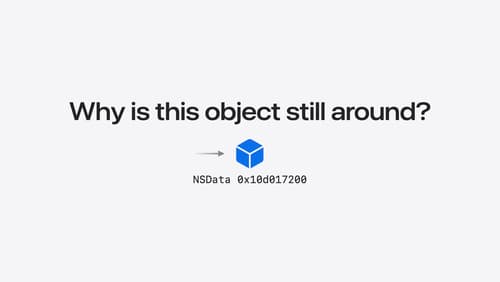How to debug memory leak
Asked on 2025-06-06
1 search
To debug a memory leak, you can use several tools and techniques available in Xcode, as discussed in the Analyze heap memory session at WWDC 2024. Here are some steps and tools you can use:
-
Xcode's Memory Graph Debugger: This tool captures memory graphs, which are snapshots of all allocations and the references between them. It helps you focus on specific allocations and is accessible from Xcode's debug bar.
-
Malloc Stack Logging: Enable this in the scheme diagnostics tab to track memory usage. It provides backtraces for each allocation, which can be useful for identifying where memory is being allocated and not released.
-
Instruments Application: Use the Allocations instrument to record the history of all allocation and free events over time. The Leaks instrument takes periodic snapshots of your app's memory to detect memory leaks.
-
Reachability Analysis: Ensure that all memory in your program is reachable through non-weak references. Unreachable memory is considered leaked. You can use the "show only leaked allocations" filter in Xcode to focus on these issues.
-
Resolving Reference Cycles: For most leaks, the goal is to find and fix one reference in a cycle, which might involve removing an accidental reference or changing an ownership qualifier from strong to weak or unowned.
For more detailed guidance, you can refer to the Reachability and ensuring memory is deallocated appropriately chapter in the session.

